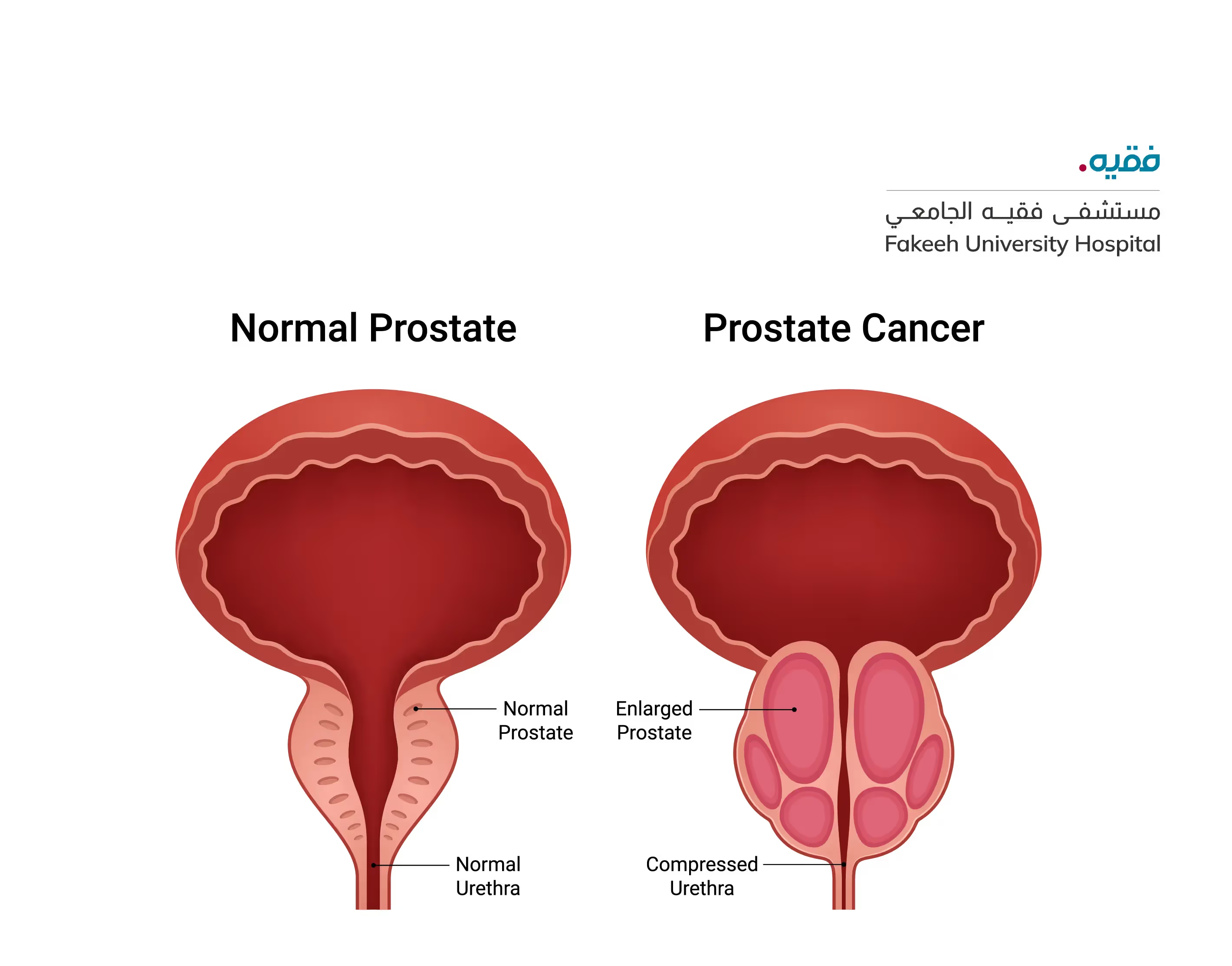
What is prostate cancer nhs, Prostate Cancer is the second most diagnosed cancer and the fifth leading cause of cancer death among men worldwide. In 2020, an estimated 1,414,000 new cancer cases and 375,304 deaths caused due to prostate cancer were reported. Unlike Many other cancers, prostate cancer typically progresses silently, with minimal or no noticeable symptoms until it reaches advanced stages. Therefore, the importance of early screening and diagnosis cannot be overstated.
The Prostate is a small, walnut-sized gland that is a crucial component of the male reproductive system. It produces seminal fluid, which nourishes and transports sperm. Prostate cancer occurs when abnormal cells in the prostate multiply uncontrollably, forming a tumor. While many prostate cancers are slow-growing and not life-threatening, others can be aggressive and deadly if not caught early. The most common question is can prostate cancer spread to the brain? you can consult with expert Urologists of Fakeeh University Hospital.
One Of the most challenging aspects of prostate cancer is its tendency to remain asymptomatic in its early stages. This means that men may have prostate cancer for years without even realizing it. Common symptoms, such as difficulty urinating, blood in the urine or semen, and persistent pain in the back, hips,or pelvis, typically only appear once the disease has progressed significantly.By this point, treatment options are often limited for prostate cancer recovery, and the cancer may have already spread to other parts of the body.

Given The absence of noticeable symptoms in the initial stages, early screening for prostate cancer is crucial. Detecting the disease before it progresses to an advanced stage can greatly increase the chances of successful treatment andlong-term survival. The American Cancer Society recommends that men should start discussing the potential benefits and risks of screening with their healthcare providers by the age of 50. However, this age may vary based on individual risk factors, such as family history and ethnicity.
ThePSA test is a blood test that measures the levels of a protein produced by the prostate gland. Elevated PSA levels may indicate the presence of prostate cancer, though they can also be influenced by other factors, such as infection or inflammation. A PSA test is a simple and relatively non-invasive way to assess the risk of prostate cancer.
During A digital rectal exam, a healthcare provider inserts a gloved, lubricated finger into the rectum to feel the prostate for any abnormalities or growth.While this method may be uncomfortable, it is a valuable tool for identifying irregularities in the prostate.
mpMRI is an advanced imaging technique that provides detailed images of the prostate.It helps identify suspicious areas that may require further evaluation, such asa biopsy. mpMRI is particularly useful when combined with other screening methods.
Prostate biopsy is the most definitive method for diagnosing prostate cancer.During the procedure, a Urologist takes small samples of prostate tissue for examination. If cancer cells are detected in the biopsy, further tests are done to determine the stage and grade of the cancer.
Prostate Cancer is a pervasive but often silent threat to men's health. Its lack of early symptoms makes the case for regular screening and early diagnosis. By Discussing the potential risks and benefits of screening with ones healthcare providers and staying informed about ones health, men can take proactive steps to safeguard their well-being and potentially catch prostate cancer at a stage what treatment can be most effective. Early detection not only saves lives but also ensures a better quality of life for those affected by this common but treatable cancer.

The spread rate of prostate cancer depends on the type and grade. Low-grade prostate cancers grow slowly, while high-grade types may spread more rapidly. Regular monitoring helps manage the risk.

Prostate cancer can vary in severity. While some types grow slowly and may not require immediate treatment, aggressive forms can spread quickly and require prompt intervention. Early detection is key to effective management.

Prostate health can be checked through a prostate-specific antigen (PSA) blood test, digital rectal exam (DRE), and regular screenings. Consult your doctor for personalized screening recommendations.

Prostate cancer is one of the most common cancers in men, while breast cancer is common in women. In certain age groups, prostate cancer diagnoses can outnumber breast cancer cases, though prevalence varies.

Men are generally advised to begin prostate cancer screening around age 50, or earlier if they have risk factors such as family history. Talk to your doctor to determine the best age for you.